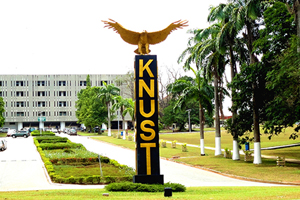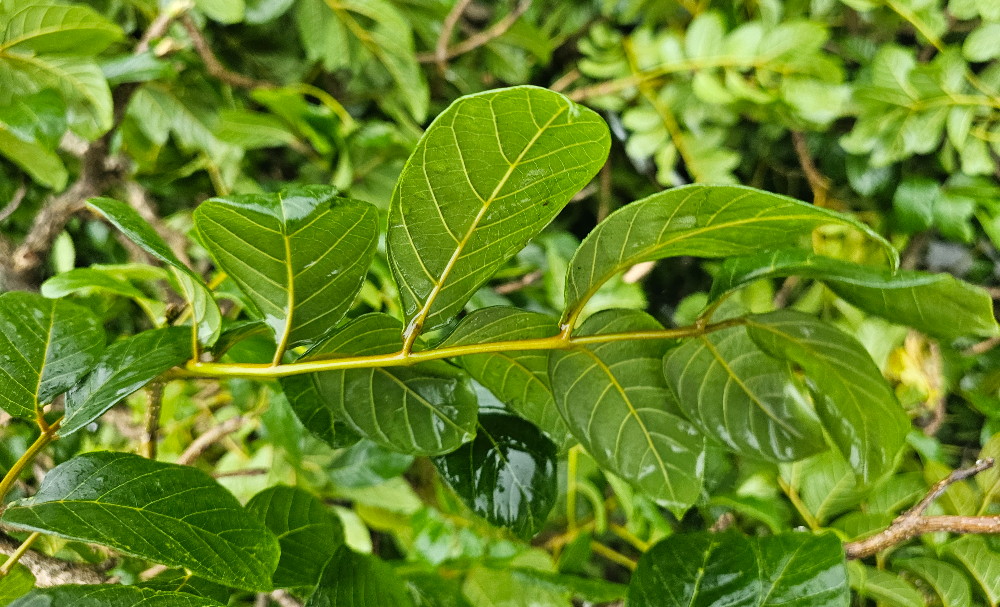In the evening of Sunday, June 8, a mighty sentinel of the Kwame Nkrumah University of Science and Technology (KNUST), Kumasi campus, bowed to the force of nature.
The African Tulip Tree, Spathodea campanulata, known by many simply as Spathodea, succumbed to a powerful gust of wind, damaging a section of the carport.
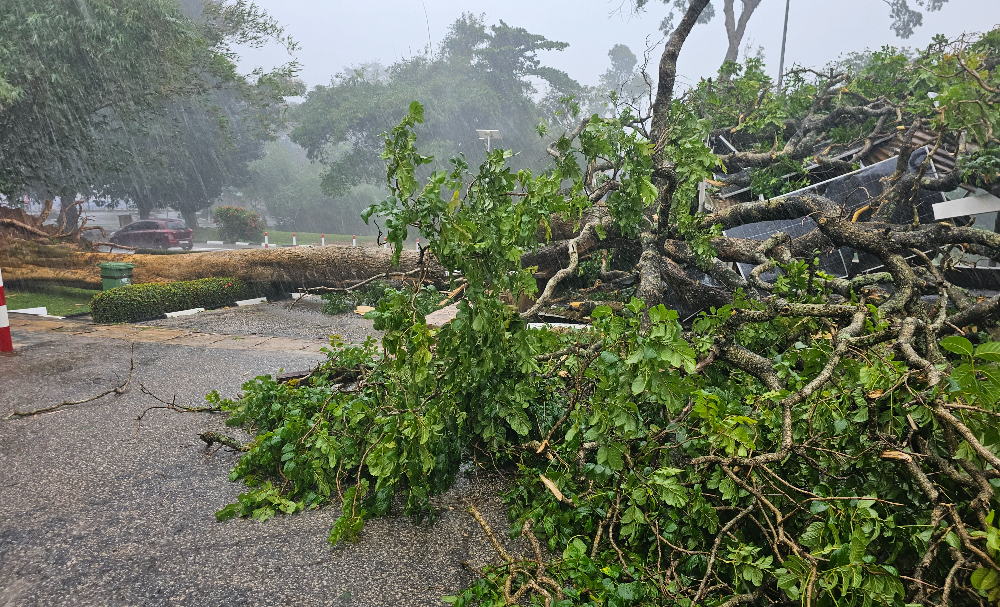
While I had initially lamented the damage to the solar panels on the carport, my focus shifted as I drew closer, umbrella aloft.
My primary concern was now the identity of the fallen tree itself. With my free hand, I quickly pulled out my phone, eager to capture a photo of its leaves for a quick search in KNUST's tree trove.
When I discovered who it was, a wave of sadness washed over me. It was our old African Tulip Tree, a landmark in the neighbourhood, now tragically uprooted.
As I gazed at its bared roots and the once-vibrant leaves, now seen for the last time, it suddenly dawned on me: a piece of our history had fallen.
For decades it had towered beside the Main Administration Block, yet it chose not to crash into the structure it rivaled in height. Instead, it opted to take a piece of KNUST’s green energy initiative into its arboreal demise, a veritable "floratery."
Planted perhaps before many current staff and students were born, Spathodea stood like a timekeeper.
Its flame-like flowers unfurled year after year, and the campus' many African Thrushes had their pick under its boughs.
Though its kind could only be seen in that vicinity, Spathodea shared the landscape with other leafy elders: the Brimstone Tree (Dolichandrone spathacea) and the False Mombin (Spondias mombin) near the Adu Building on the Ring Road. Together, they formed an assembly of shade and colour.
Tree of many uses
The African Tulip tree is indigenous to West Africa, including Ghana, and grows naturally in secondary forests. While many knew Spathodea for its flamboyant petals and strong frame, its utility extended far beyond decorative flourish.
Ghanaian ethnobotanical studies and traditional medicine practices across tropical Africa have documented its diverse uses.
Extracts from the bark, leaves, and flowers are traditionally employed for ailments like skin diseases, wounds, and fevers, with pharmacological research confirming its antibacterial and antioxidant properties. Its vibrant, tulip-shaped flowers, of course, made it a perennial favourite in public parks and institutional compounds for its ornamental value.
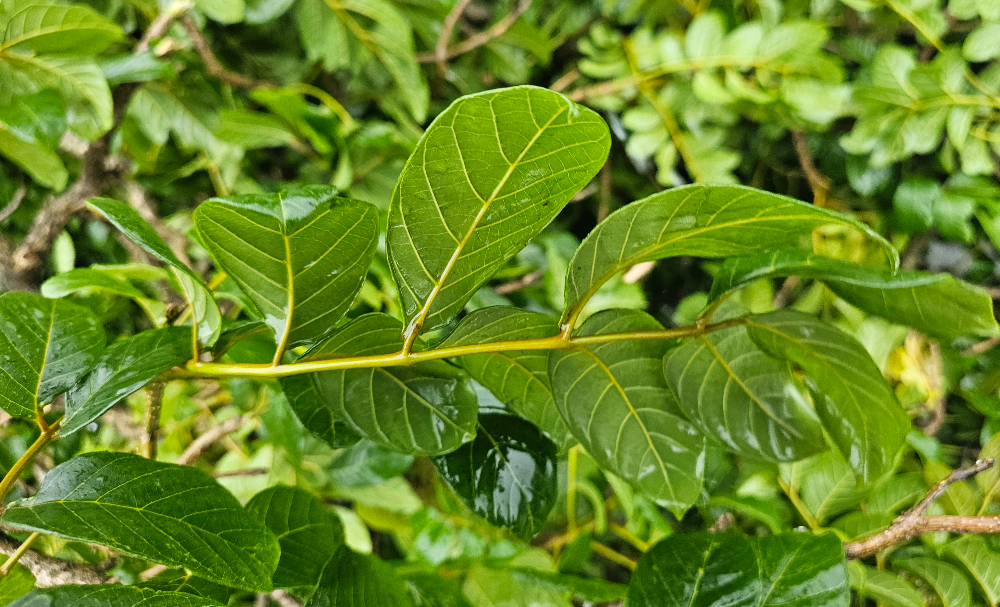
Beyond this, local community practices attest to its roles as a water reservoir within its flower buds, and its canopy provided crucial ecosystem support, offering nesting and feeding grounds for species like the Thrush bird.
The unopened flower buds contain a reddish sap that children in Ghana playfully squirt, referring to it as "kɔkɔnsu" (red tears) in Asante/Twi or "adatsigo" (tear-pod) in Ewe.
The wood is also noted for being soft and light, suitable for rough carpentry, crates, and traditionally used to make parts of blacksmiths' bellows and sometimes drums.
A quiet farewell
Today, what remains of the tree lies in chopped sections.
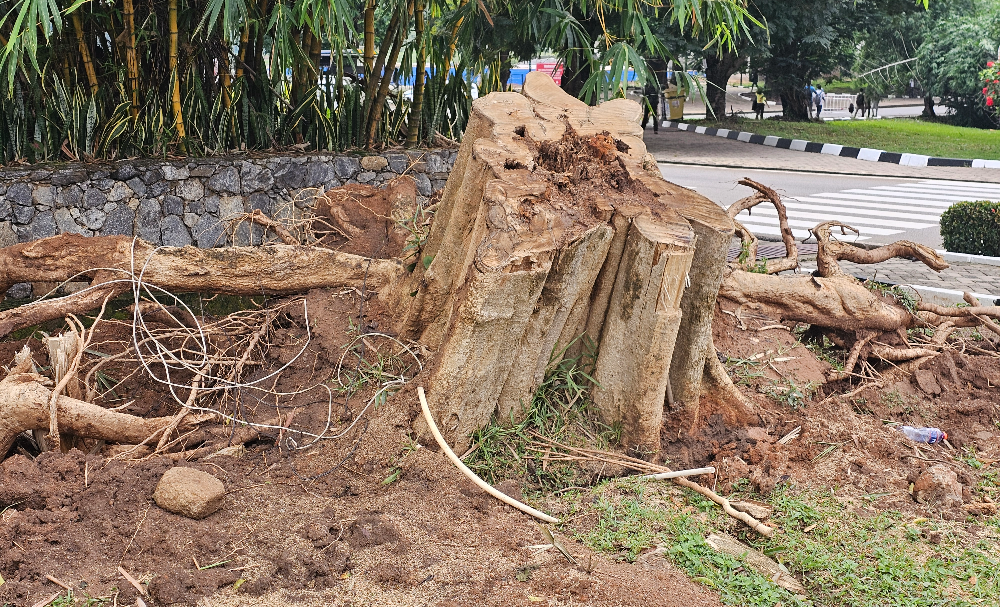
The Rapid Response team of Grounds and Gardens of the Environmental Quality Unit could not have been less charitable, as they had to make way for staff to get to their offices.
Yet, as is the rhythm of nature, death makes way for new beginnings. Perhaps it will be crafted into a bench, a desk, or a sculpted piece. Perhaps it will mulch the ground where a new sapling will rise.
In its lifetime, Spathodea offered shade for walking students and filtered the already vibrant campus air.
Most importantly, in its falling, it "remembered" the building with which it had shared friendship for decades.
| Story and Photos by Emmanuel Kwasi Debrah (URO) | |

